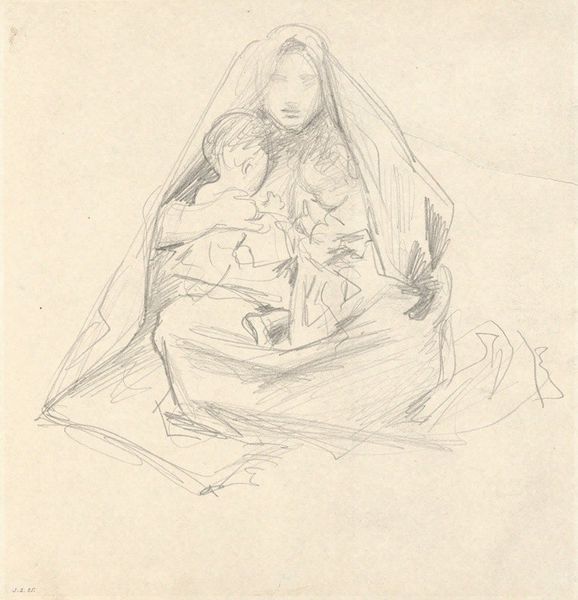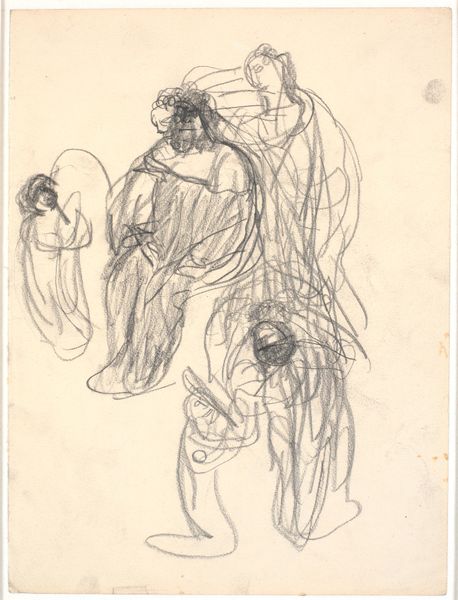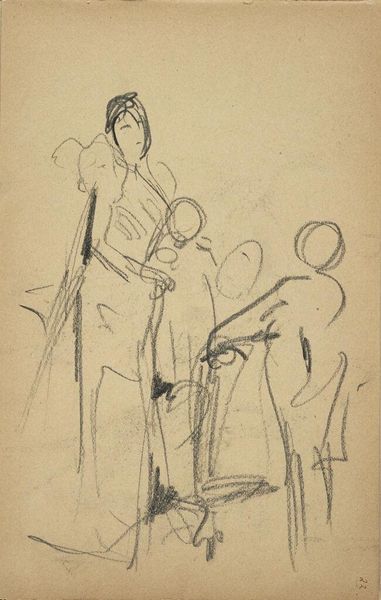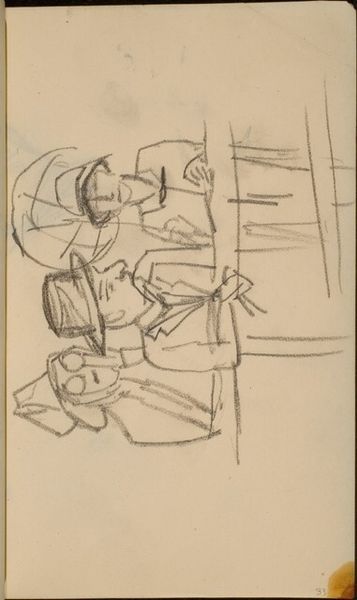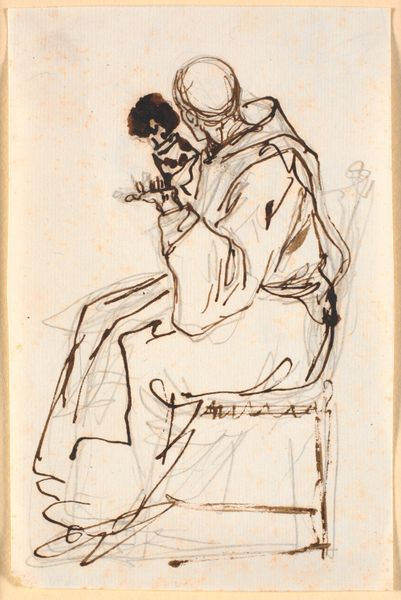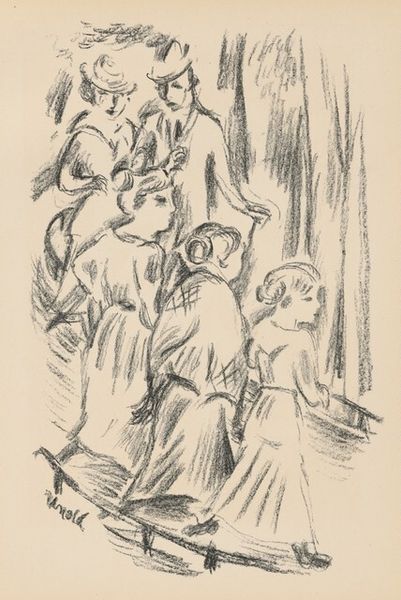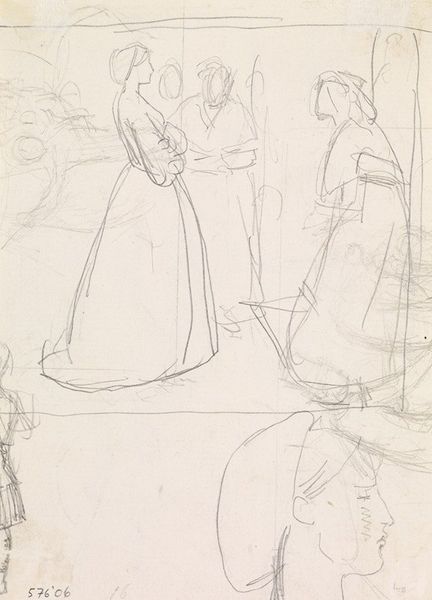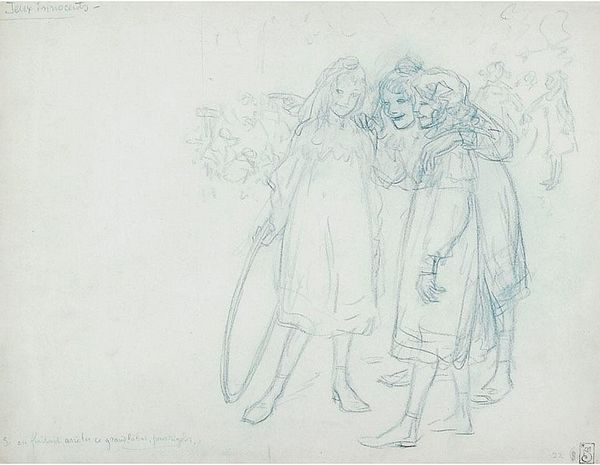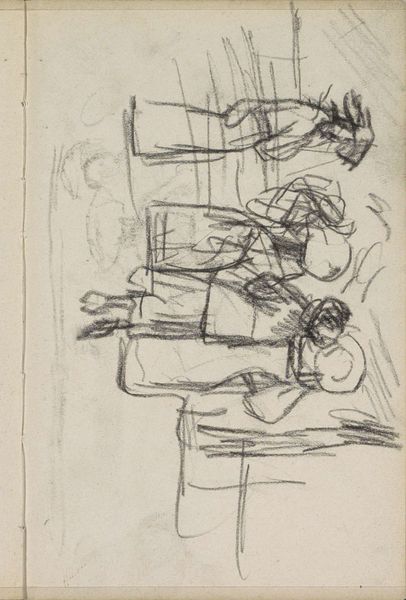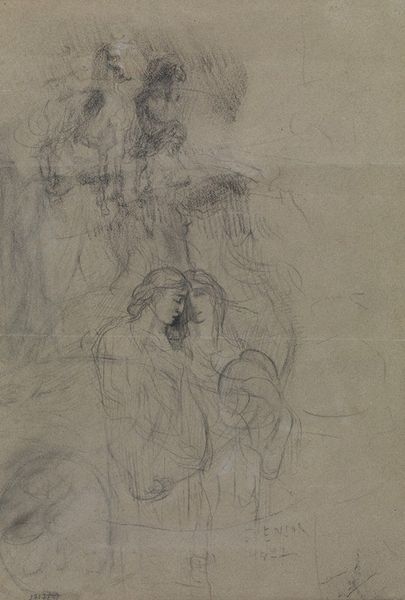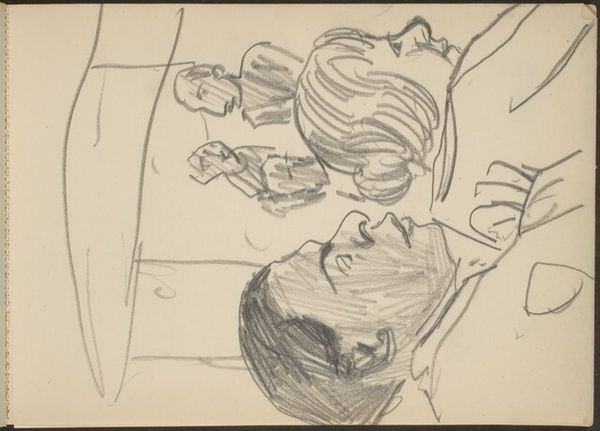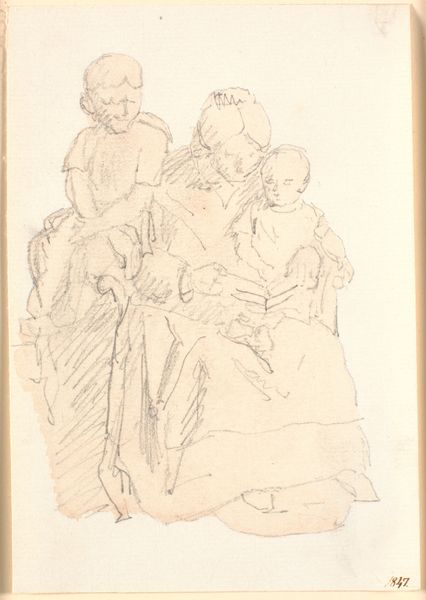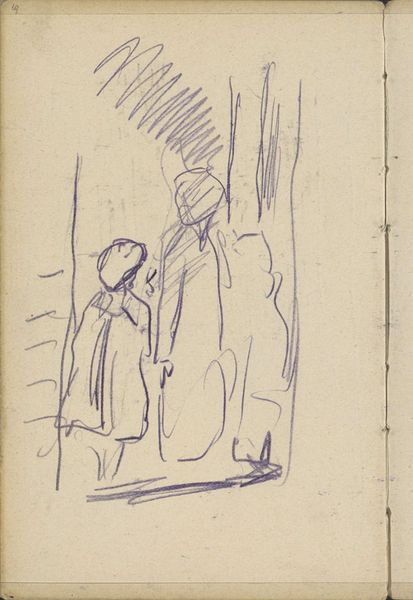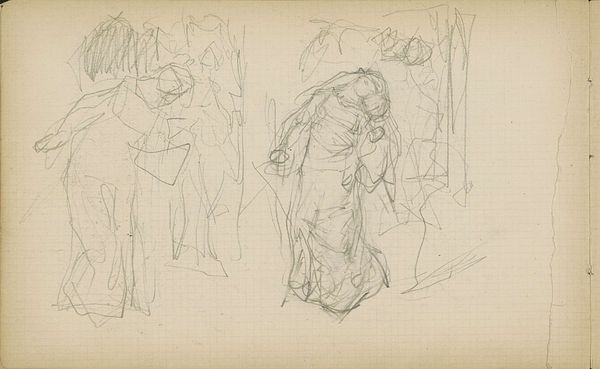
drawing, pencil
#
portrait
#
drawing
#
figuration
#
group-portraits
#
pencil
#
line
Copyright: Public domain
Editor: We're looking at "Femme de Profil et Trois Enfants," a pencil drawing from 1916 by Théophile Alexandre Steinlen. There's something really intimate and melancholic about it. It’s simple in its execution but evokes a strong sense of connection between the figures, what catches your attention here? Curator: It's interesting you say melancholic. It feels like a stolen moment, doesn’t it? Look at how the lines are both delicate and purposeful. There’s a beautiful dance between the raw quality of the pencil strokes and the tender portrayal of the mother and her children. There's a tension between simplicity and depth here. Are you seeing any indications of that era in it? Editor: The clothing definitely feels like the early 20th century, especially the mother’s headscarf, perhaps. The overall tone, though, feels universal – a timeless portrayal of motherhood and childhood. Do you think that timelessness was intentional? Curator: Intention is a slippery fish, isn't it? But it’s worth considering how Steinlen, amidst the turmoil of the time, chose to capture a scene of quiet domesticity. These subtle decisions can reveal the deepest artistic impulses, wouldn’t you agree? I think the sketch conveys warmth, a kind of refuge against the backdrop of potential upheaval. Editor: It’s made me rethink the narrative, and now it feels far less melancholic. More like a celebration of quiet resilience, I like that idea a lot! Curator: See how a little conversation can change the lens? Maybe art isn’t just about what's on the surface but about the stories we discover within it.
Comments
No comments
Be the first to comment and join the conversation on the ultimate creative platform.
